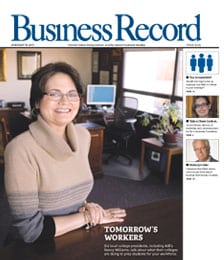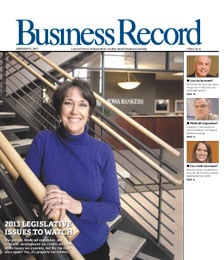Traditional offices continue to give way to cubicles

Office politics over who gets a corner office are becoming a thing of the past in most settings as traditional offices give way to cubicle stations. These days, managers are relocated closer to their employees, instead of down the hall behind a closed door, and companies jockey workers to create the best possible working environment.
Rick Phillips, a spokesman for Allied Insurance Co., said the new Allied headquarters at 1100 Locust Ave. will be filled with cubicles and will offer few traditional office spaces, except for the top floor which will house the company’s executives. More than 1,500 employees from the company’s current downtown office at 701 Fifth Ave. and its suburban branch offices will be playing musical chairs when they begin to move in December.
Phillips said a few employees on each floor, based on seniority and title, will occupy offices located near the center of the room and a large portion of the remaining floor space will be filled with cubicles. Most floors on average, he said, might have 10 offices and 300 workers, most of whom will work in standard-sized cubicles. Walkways will be built on the outer ring of rows of cubicles near windows to allow employees to enjoy natural lighting.
“It’s important to us that everybody be able to share available light most of the time,” he said. “We’re not a big-office environment; we try to create a more friendly environment.”
Though the majority of Allied’s employees will relocate with their current teams of co-workers, Phillips said, the new headquarters will afford some employees the opportunity to share office space with co-workers they have not worked with before.
“Some departments will be split,” he said. “But we think the new shared office space will cut down on people having to move from floor to floor each day.”
Meanwhile, approximately 420 employees, mostly sales and service staff, will remain at the office on Fifth Avenue, Phillips said. He doesn’t know if those offices will be updated, but Phillips said the company needed to maintain the location because it is already outgrowing its new facility.
“We continue to expand and add resources,” he said.
Rhonda Clark-Leyda, a spokeswoman for Principal Financial Group, said her company bases the size of its offices and their location on work function. She said there are no “typical” offices in their buildings.
“We have people of all levels within the company sitting in all different sizes and types of offices throughout the building,” she said. “It’s based on the functions of the team and what helps the team be most productive and get their work done in the most efficient manner.”
Some companies, however, still utilize traditional office settings.
When CB Richard Ellis/Hubbell Commercial announced the return of vice presidents Timothy Sharpe and Linda Gibbs to head up its first private client sales team, the company converted an upstairs conference room into two 10-foot-by-14-foot offices to house its new sales team. Gibbs said she and her husband requested to have the same design and color of their former offices at Sharpe Gibbs Commercial Real Estate Services, a business they founded in 1998.
The company agreed and painted their offices in deep purple and slate blue, respectively. Gibbs said she finds purple to be soothing, which helps establish a positive mindset at work.
“We reproduced our old offices and brought over some familiar pieces,” she said. “I like to create an environment at work and at home that is balanced and can help put you in a positive frame of mind, which can make you more productive.
“People spend so much time in their offices, and they can be so sterile,” she said. “I wouldn’t want to work in an office with just four white walls. That just doesn’t feel right to us. We’re fortunate things worked out our way.”







